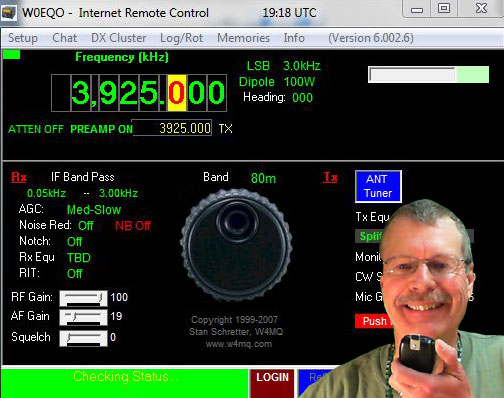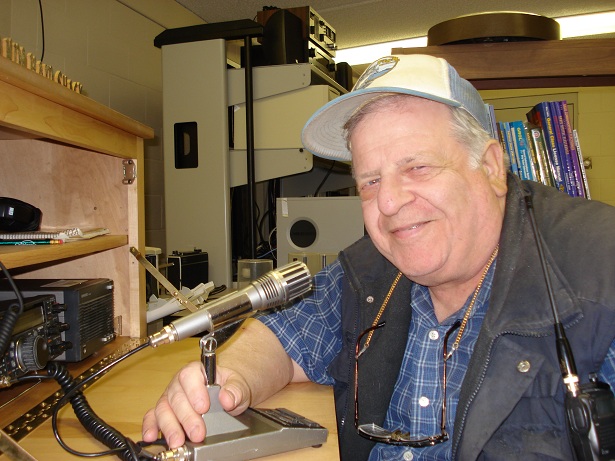Happy Thanksgiving!

Don't forget that the Handiham Internet remote base stations are available for members to use throughout the upcoming holiday week.
The Handiham office will be closed Thursday, November 25, and Friday, November 26 for an extended Thanksgiving holiday. We will reopen on Monday, November 29. Wednesday, November 24 we close early.
Even though this is a holiday week, the Handiham nets will go on as usual at their regularly-scheduled times. If a net control station is not available, we will have a roundtable conversation on the frequency. Sometimes I think that there is even more amateur radio activity on holidays, simply because those folks who might ordinarily be at work will instead have an opportunity to head for the ham shack and get on the air. Of course if you have guests at your home, you need to be polite and see to their needs first. Hey, maybe they would like to see your radio equipment and learn about amateur radio!
Earlier this week I spoke with a Handiham member who was asking if we still have a 20 m net. Well, the 20 m net is listed on many websites as still being active, but it has really fallen out of use during the lengthy sunspot minimum. Now that we are coming into a period of higher solar activity, we will start the 20 m net again. The net time is Monday morning at 9:30 AM United States Central Standard Time. Our net always stands down if the Salvation Army Net is on the frequency. The 20 m frequency is 14.265 MHz. Please join us on Monday morning and let's see if there is interest in continuing this net or if we should take a look at a different time and frequency. To summarize:
Things to remember about the Handiham 20 meter net:
We meet on 14.265 MHz SSB Net time is Monday at 9:30 AM Central Standard Time Net control station needed; volunteers welcome! Everyone is welcome – you don't need to be Handiham Radio Club member. We always stand down for the Salvation Army Net if they happen to be on the frequency.
I have to admit that I am not all that thrilled with a Monday morning net on 20 m. The band is probably not going to be open to the West Coast all that well, and in the early days when the net time and frequency was originally chosen, it was truly the bad old days for people with disabilities and they were usually stuck at home during the day without jobs. Today is different and many people with disabilities, including Handiham members, have regular employment and are thus not available for a daytime net. Nonetheless, we will soldier on and try the daytime net again and see what happens. In the for-what-it's-worth department, the daytime EchoLink net does actually offer the possibility of people to check in via computer from their place of employment, hopefully during break time! So I do think that we have daytime activity covered pretty well. It is still the evening 75 m net that needs testing, and we will begin doing that tonight at 8 PM, just one half hour after the Wednesday evening EchoLink net begins. That will give the EchoLink net control station a chance to announce that the 75 m net will be starting at 8 PM United States Central Standard Time. Let's plan to be on 3.715 MHz, plus or minus QRM. I do need to remind you that this frequency is in the Advanced Class portion of the 75 m band. You must have at least an Advanced Class license to transmit on 3.715 MHz, although anyone, licensed or not, is free to listen on that frequency. As we go ahead and develop this net, we can always change the times and frequencies if that should prove necessary. If there is no net control station available at any given net time, we can just have a friendly roundtable on the frequency. Please feel free to use the Internet remote base stations to check in or to listen, especially if skip conditions for your part of the country (or world) do not favor 75 m. Remember that the EchoLink feature is available for listening.
I'm not going to make any promises about when I will be able to participate in nets this week, although I'm certainly going to try to get on the air as much as I can. We are going to have a house full of guests that will include extended family, and my son Will, KC0LJL, is driving back home from university with three Japanese exchange students who will stay with us over the extended Thanksgiving holiday. You can bet that it's going to be pretty busy around my QTH, but you never know when you might be able to introduce a new person to amateur radio, especially if they can get on the air and talk to someone from their home country!
So, from the staff, volunteers, members, and supporters of the Handihams, we wish you a wonderful Thanksgiving holiday, and we hope to hear you on the air!
Patrick Tice, WA0TDA
Handiham System Manager

